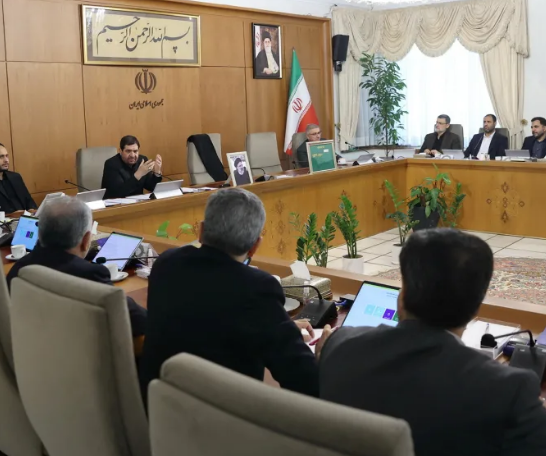The sudden demise of Iran’s President Ebrahim Raisi has left the country in a state of uncertainty. Explore the challenges Iran faces and what comes next in terms of succession and the future of Iranian politics.
In a shocking turn of events, Iran’s President Ebrahim Raisi has tragically passed away while in office. This untimely demise has left the Islamic Republic’s hardline establishment in a state of uncertainty. As we delve into the aftermath of this event, we will explore the challenges that Iran faces both domestically and internationally. Join us as we shed light on the future of Iran and the potential implications of this unexpected turn of events.

The Demise of President Ebrahim Raisi
President Ebrahim Raisi, an ultraconservative leader, met an unfortunate end on Sunday in a helicopter crash in Iran’s remote northwest. This tragic incident not only claimed the life of President Raisi but also resulted in the loss of Foreign Minister Hossein Amir-Abdollahian and other high-ranking officials. The timing of this incident couldn’t be more critical, as Iran is grappling with a multitude of challenges on various fronts.
Challenges Faced by Iran
Economic Sanctions and Crippling Effects
The Islamic Republic’s economy has been severely impacted by American sanctions, which have taken a toll on the country’s financial stability. These sanctions have limited Iran’s access to global markets, hindering its ability to trade and conduct business with other nations. The result is a crippled economy that struggles to meet the needs of its population.
Restive Youth and Growing Discontent
Iran’s young population is becoming increasingly restless and dissatisfied with the current state of affairs. Unemployment rates among the youth are high, and aspirations for a better future seem elusive. This discontent has fueled protests and demonstrations, reflecting the frustration and desire for change among the Iranian youth.
Rising Hostilities in the Middle East
Iran faces mounting challenges from belligerent adversaries in the Middle East and beyond. The region’s geopolitical landscape is fraught with tensions, and Iran finds itself embroiled in conflicts and rivalries with neighboring countries and global powers. Navigating these complex dynamics requires astute leadership and diplomatic finesse.
The Future of Iran: What Comes Next?
Transfer of Power
With President Raisi’s demise, power has now been transferred to Mohammad Mokhber, who served as Raisi’s vice president. Mokhber has been approved as the acting president by Supreme Leader Ayatollah Ali Khamenei, the ultimate authority in Iran. While not as well-known as Raisi, Mokhber is described as an administrator who is closely aligned with the levers of power in Iran. In the coming days, he is likely to present a model of “business as usual.”
Elections on the Horizon
According to Iranian law, elections must be held within the next 50 days to determine the country’s new president. Experts anticipate that these elections will be organized hastily, potentially resulting in low voter participation. In the previous elections, Iran witnessed its lowest turnout since the establishment of the Islamic Republic in 1979. The dominance of hardline politicians in the parliament and the Assembly of Experts reflects a lack of faith in the electoral process among the population.
Uncertain Outlook
The passing of President Raisi has occurred at a time when the Islamic Republic is grappling with legitimacy issues and exclusionary policies. The future of Iran remains uncertain, and the nation must navigate through a complex web of domestic and international challenges. It is crucial to keep a close eye on the developments in Iran, as they will undoubtedly have implications for the region and the world at large.
The unexpected demise of President Ebrahim Raisi has left Iran’s hardline establishment facing an uncertain future. The country grapples with economic sanctions, a restless youth, and rising hostilities in the Middle East. Mohammad Mokhber, the acting president, must steer the nation through these challenges. Elections loom on the horizon, but a lack of faith in the electoral process poses a significant hurdle. As Iran moves forward, it faces a delicate balancing act between internal and external pressures. The world watches with bated breath to see how Iran navigates thesechallenges and what the future holds for the nation.
Frequently Asked Questions
1. Who is Mohammad Mokhber?
Mohammad Mokhber is the acting president of Iran following the demise of President Ebrahim Raisi. He served as Raisi’s vice president and is described as an administrator closely aligned with the levers of power in Iran.
2. What are the challenges faced by Iran?
Iran faces economic sanctions, a restless youth population, and rising hostilities in the Middle East. These challenges impact the country’s financial stability, internal stability, and geopolitical positioning.
3. What is the outlook for Iran’s future?
The future of Iran remains uncertain, as the country navigates through complex domestic and international challenges. The passing of President Raisi has exacerbated legitimacy issues and exclusionary policies. Iran’s upcoming elections and the response to external pressures will shape its trajectory in the coming years.
















